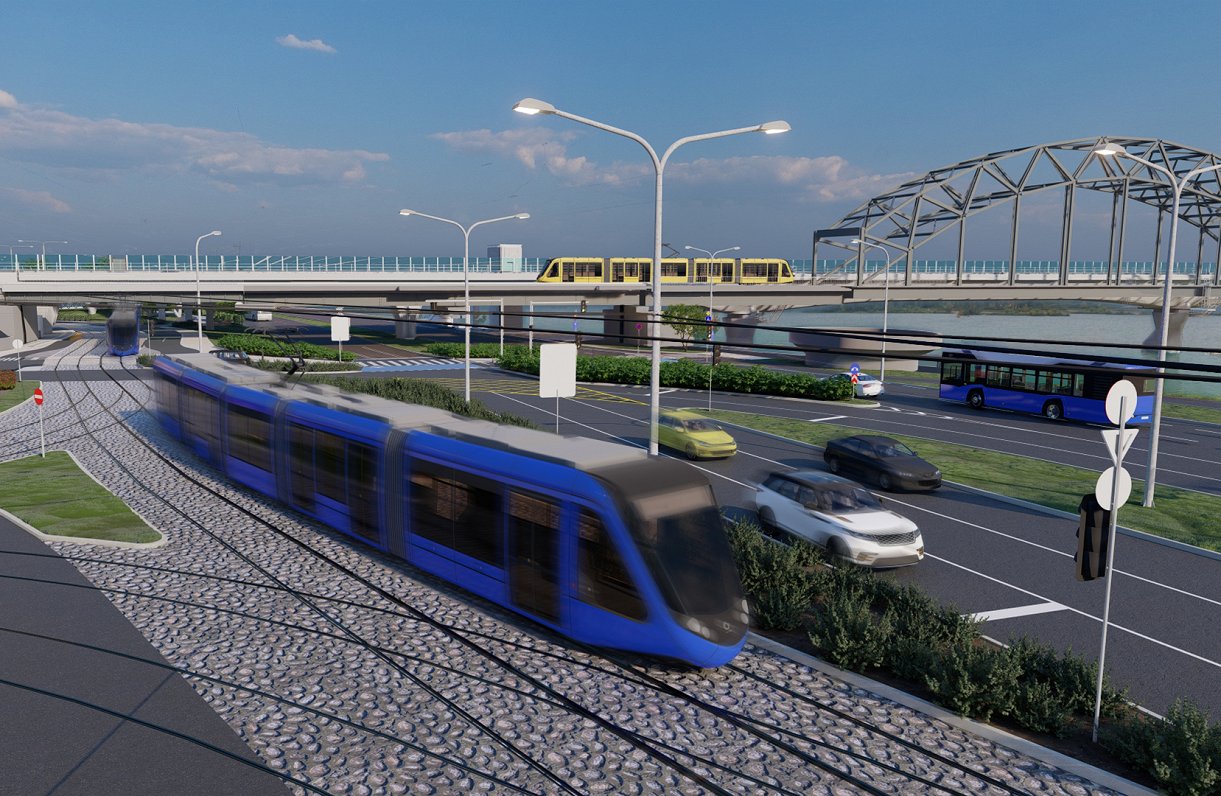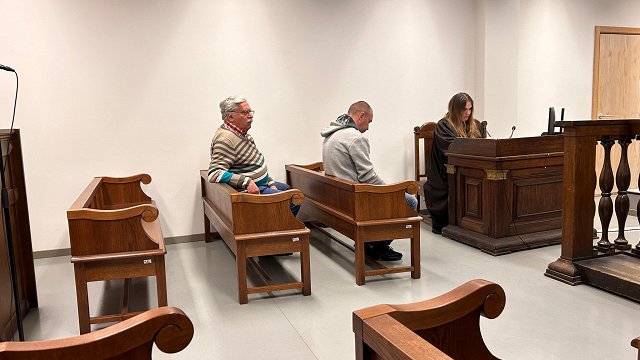It is written on a colorful and illustrated fence surrounding the large construction site at Riga Central Station that the new Rail Baltica station will be fully completed and functional in 2026. But it is unlikely.
“Rather, 2026 is that initial year of peak pace. Right now, seeing the dynamics of access to funding, we would say it's 2027. Similar is the case with the airport section,“ said Kaspars Vingris, who runs the company “European Railway Lines” (EDzL) which is implementing the project in Latvia.
Vingris said that about 600 million euros are available for the company. With these, works around the Ministry of Transport and the Central market will be able to be completed by 2025, as well as work on what has begun around the airport and construction of 13 kilometers of tracks between Iecava and Bauska will continue. For work to go elsewhere, the company must continue to apply for European money.
“Because right now all we can talk about is funding which is enough to keep construction work from stopping, but for the construction work to be ambitious enough for the pace that is needed to build all the infrastructure by 2030, surely more funding is needed,” Vingris said.
In order to complete the work started in Rīga by 2027, a little over EUR 200 million is missing. Of these, less than half are earmarked for the Central station section, while more than one hundred million euros are needed to build the 4.5-kilometer track from Jaunmārupe to Imanta.
To develop the project, the new government backed an application for yet another military mobility funding a week ago. If the responsible European agency gives the green light, the first round of the bridge over the Daugava could be built in the Ķekava and Salaspils municipalities.
Of all costs, the State provides only a small part. Up to 85% of the funding comes from the European Union. To get the money, Latvia needs to apply. However, in some applications, Latvia has not been able to ensure the readiness of the project. This is due to delays in the design of the baseline. This is what former Transport Minister Jānis Vitenbergs (National Alliance), who still held the post during the interview, says.
“Once construction starts, you can absorb larger amounts of money, show the European Commission that the works are going forward. With lax design or issues with land, the possibility of acquiring funds for the realization of the project is severely, severely reduced. There is a need to update it at all levels in the negotiations with the European Commission. There are more projects, the competition is huge. Those who make sure their money moves win,” said Vitenbergs.
In the Baltic States, the Rail Baltica route will be 870 kilometers long, of which nearly three-quarters are now being designed. On the other hand, the procurement for design takes place in several more stages in Lithuania. A total of EUR 2.7 billion has been raised for the works so far, said RB Rail, which is responsible for the project throughout the Baltics.
The company's technical director in Latvia, Ēriks Diļevs, said:
“We have already applied for construction work on the embankments of the main route, as well as related infrastructure, which are road transport, engineering structures, engineering communications, service roads, and access roads. In Estonia, road crossings, animal crossings. This year, we are again applying for the next funding call, where we are putting significantly larger kilometers of the core route in accordingly. That's how this funding model works. We cannot say, “You see, we now need all three Baltic States to finance everything” because it is also linked to the market's ability to absorb money.”
The former Minister of Transport pointed out that Latvia has managed to attract 1.3 billion euros or nearly half available to the three Baltic States.
It should be recalled that several years ago it was planned that the costs in Latvia would be around two billion euros. This means that more than half should be done with the the funding available now but in reality, the result is far from that. Latvian Television reported this month that the project costs could increase by up to four times – thus up to eight billion euros.
Vingris explained that average costs in Europe can be calculated – they are about 30 million per kilometer. “Then the math is very close to what's being said publicly now as a potential cost,” he said.
Since more than 260 kilometers of rail are about to be built in Latvia, according to the figures given by the exercise, it is estimated that the Rail Baltica project could cost Latvia more than EUR 7.8 billion, which is at least two billion more than originally estimated for the three Baltic States.
Former Minister of Transport Tālis Linkaits also agreed that the costs in Latvia could reach the average European cost. He pointed out that it had not initially been calculated what the line had to look like.
“There is an ongoing reference to the 2017 study, which was due to show to the European Commission that such a project is feasible at all and has economic returns. Far from capturing all the potential costs this project could have already had in 2017. The agreement reached by the three Baltic States – once the design has been completed and indicative is the end of this year, the countries together order a study that updates both costs and socio-economic benefits. ”
The significant rise in costs worries new Transport Minister Kaspars Briškens (Progressives). He has requested explanations from those responsible. Answers are expected this week. Moreover, Briškens is not happy with the management of the project. It should be noted that before being elected to the Saeima, Briškens worked for RB Rail as head of strategy and development.
“It is not the model that was originally conceived a decade ago – there will still be one entrant to this project in the Baltic States, but unfortunately, especially in recent years, the role of the international joint venture has been diminished. This has, of course, both complicated relations between these companies and led to the project not only being delayed but also, of course, getting more expensive,“ Briškens said.
Those responsible for the project promise that the Baltic States will be connected to Poland in 2030. At certain stages, trains could start running in 2028, when the first passenger service could start between Rīga and Lithuania, the European Railway Lines said. But will there be a carrier is a different question. The Road Transport Directorate said they were aware of the task, but the work was in its infancy.





























